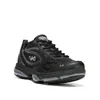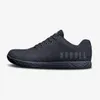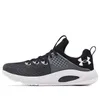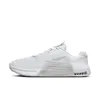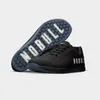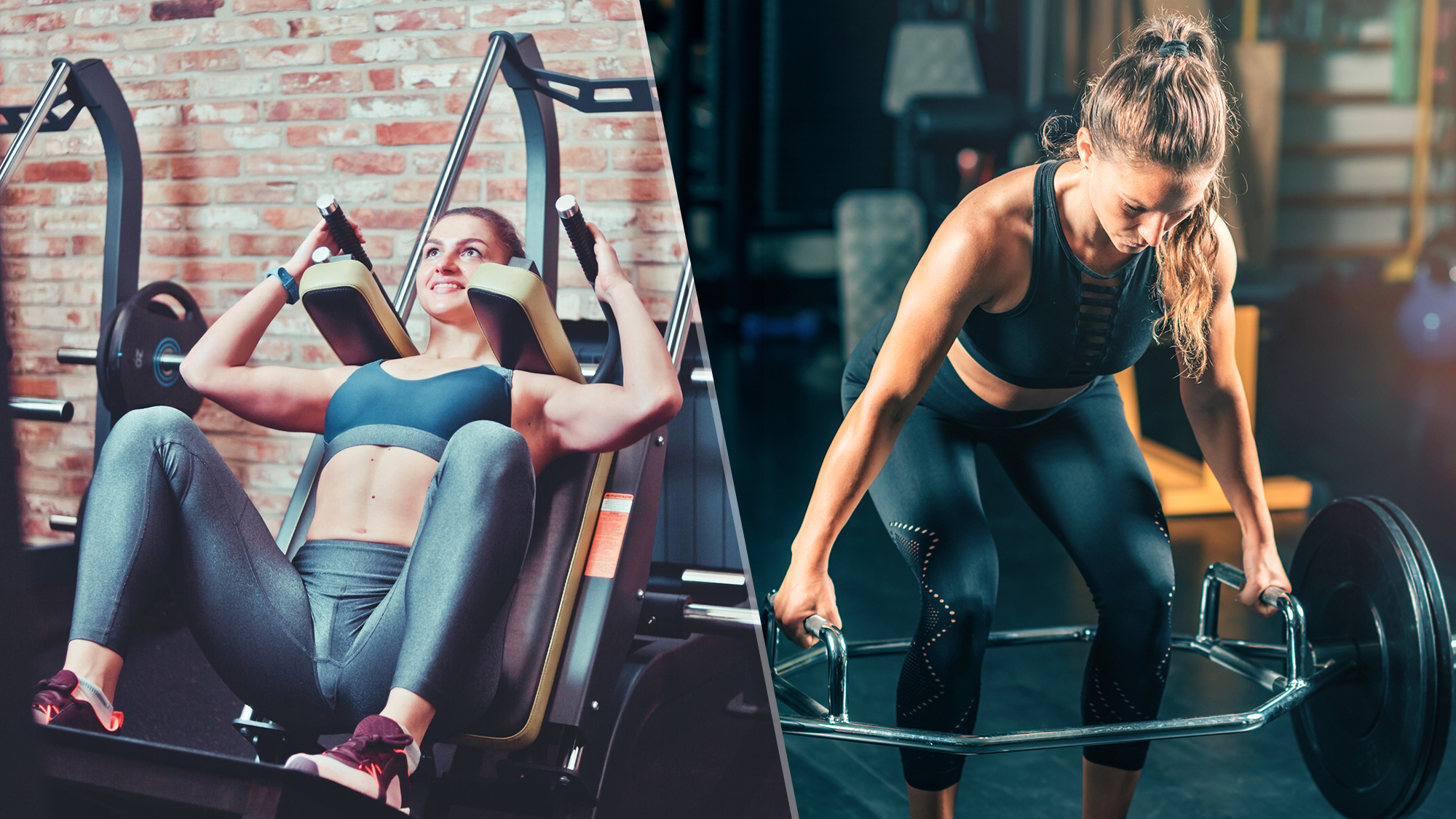
If you’re trying to build and strengthen your quads and can’t decide between hack squats versus trap bar deadlifts, we’ve got some answers to help you decide which is the best strength exercise for you, along with the benefits and drawbacks.
The trap bar deadlift and hack squat build lower body strength and muscle, and both work your quads hard, but each exercise emphasizes muscles differently. There are so many squat and deadlift variations around that it can be confusing for weightlifting beginners and even seasoned gym-goers to decide which are the best leg exercises to include in a strength program.
The nuances between the two exercises mean simple changes to equipment, load, and mechanics can transform how you work your body. If you’re curious, we look at both lower body exercises, the muscles worked and how and when to use them.
Hack squats vs trap bar deadlifts: Muscles worked and range of motion
Hack squats and trap bar deadlifts are compound exercises that activate, strengthen, and build multiple muscle groups and joints together. Both serve as excellent lower-body strength exercises to add to your leg day routines and offer the capacity to load heavily and add variety to your existing program. It comes down to squats versus deadlifts, so these aren’t exactly interchangeable exercises.
Trap bar deadlifts and hack squats load and emphasize the quads, but the mechanical and technical requirements differ. If the hack squat isn’t for you, consider squat variations first, and if the trap bar deadlift doesn’t work for you, you could try deadlift alternatives first — that doesn’t mean you couldn’t add both if you prefer.
To help you decide, we’ll delve into the muscles worked, mechanics, range of motion and weights.
Hack squats
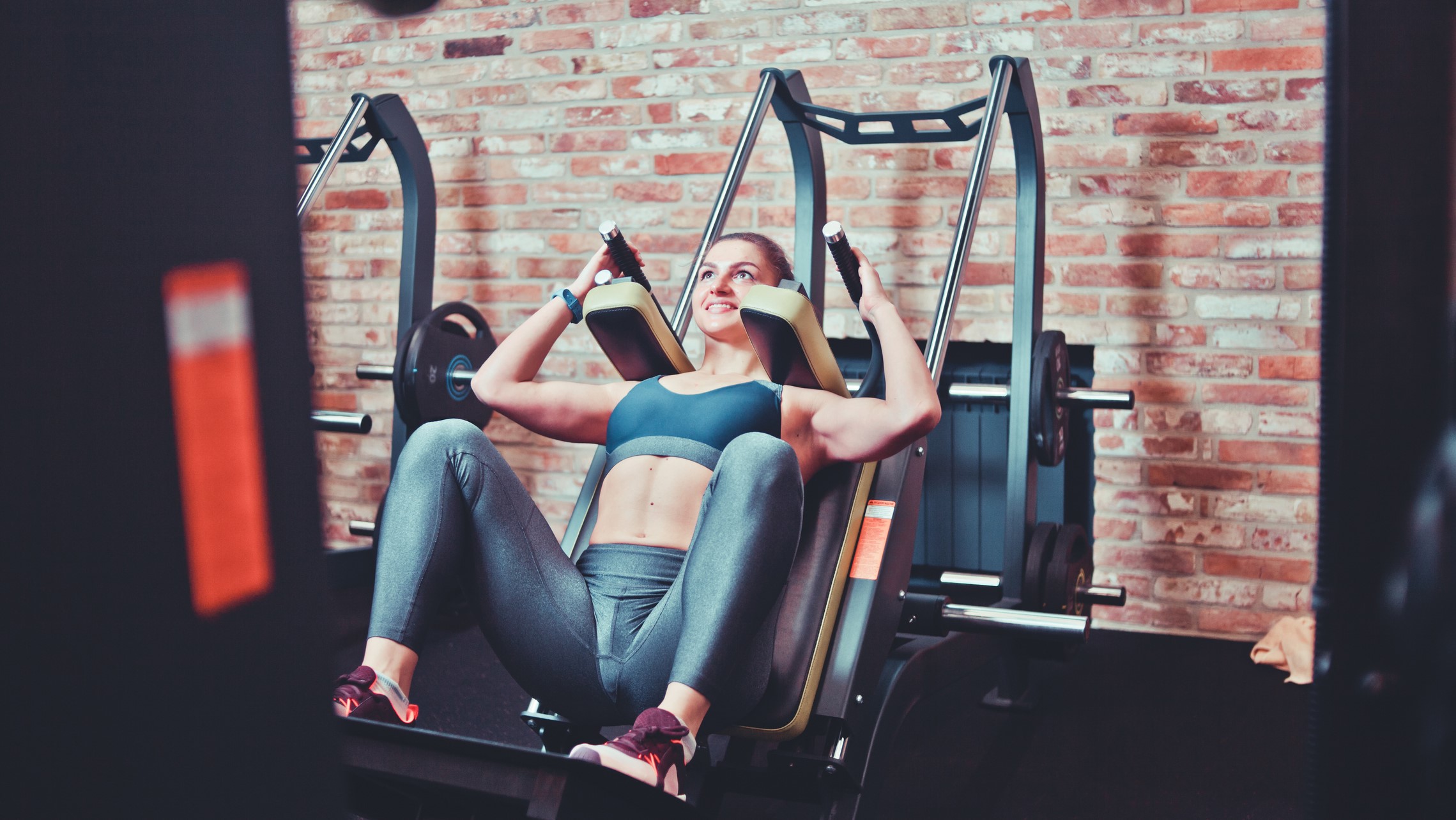
It’s simple, really — small adjustments to load and body positioning totally change the emphasis on your muscles.
Get instant access to breaking news, the hottest reviews, great deals and helpful tips.
Hack squats are one of the best ways to target your quads. The move can be performed using a barbell, trap bar (also known as a hex bar), or machine, and is a knee-dominant exercise. It works the entire lower body, including your hip flexors, glutes, hamstrings and calves.
The vertical movement pattern front-loads the body and hits the quads harder, and when you squat using the machine, you’ll bend at the hips and knees fairly equally while maintaining a fixed-back position — great news for fixing the butt wink while building your quads.
There are several ways to learn how to do a hack squat; the machine hack squat is a popular method used in gyms, as lifters can press their backs against the backrest of the machine and load directly above the shoulders. The variation requires less upper body stability, which helps your quads drive the exercise and take some pressure off the shoulders and back.
However, it can leave the upper body less prepared for unsupported barbell front or back squats if you add them, and some people may struggle for glute engagement as the hips can’t track backward.

Barbell hack squats are trickier to navigate and involve lifting the barbell from the ground behind the body; for some people, the method is off the table depending on the mechanics of the lifter (particularly those with short arms), and coaches are careful to program them. Elevating your heels on plates can help track the knees over the toes and hit your quads, but it can be awkward.
There are other ways to achieve a hack squat without barbells: trap bars. We’ll mention the benefits of trap bars later, but they tend to suit lifters who prefer working with a bar while taking some pressure off the lower back. With any barbell lift, you might find your wrist, forearm and grip strength limits how heavy you can go, but using bars helps strengthen these areas too.
Verdict: If you want a quad-dominant squat variation, this option could be for you. It'll hammer your quads, and it's versatile. Squat beginners may also adopt machine hack squats if they have limited mobility or to help practice proper mechanics and foot positioning toward the mid-foot and heel.
It helps lifters familiarize themselves with the squat movement pattern from a supported position, while the barbell variations are technically more challenging. Remember to control both phases — concentric (pushing up) and eccentric (lowering).
Trap bar deadlifts
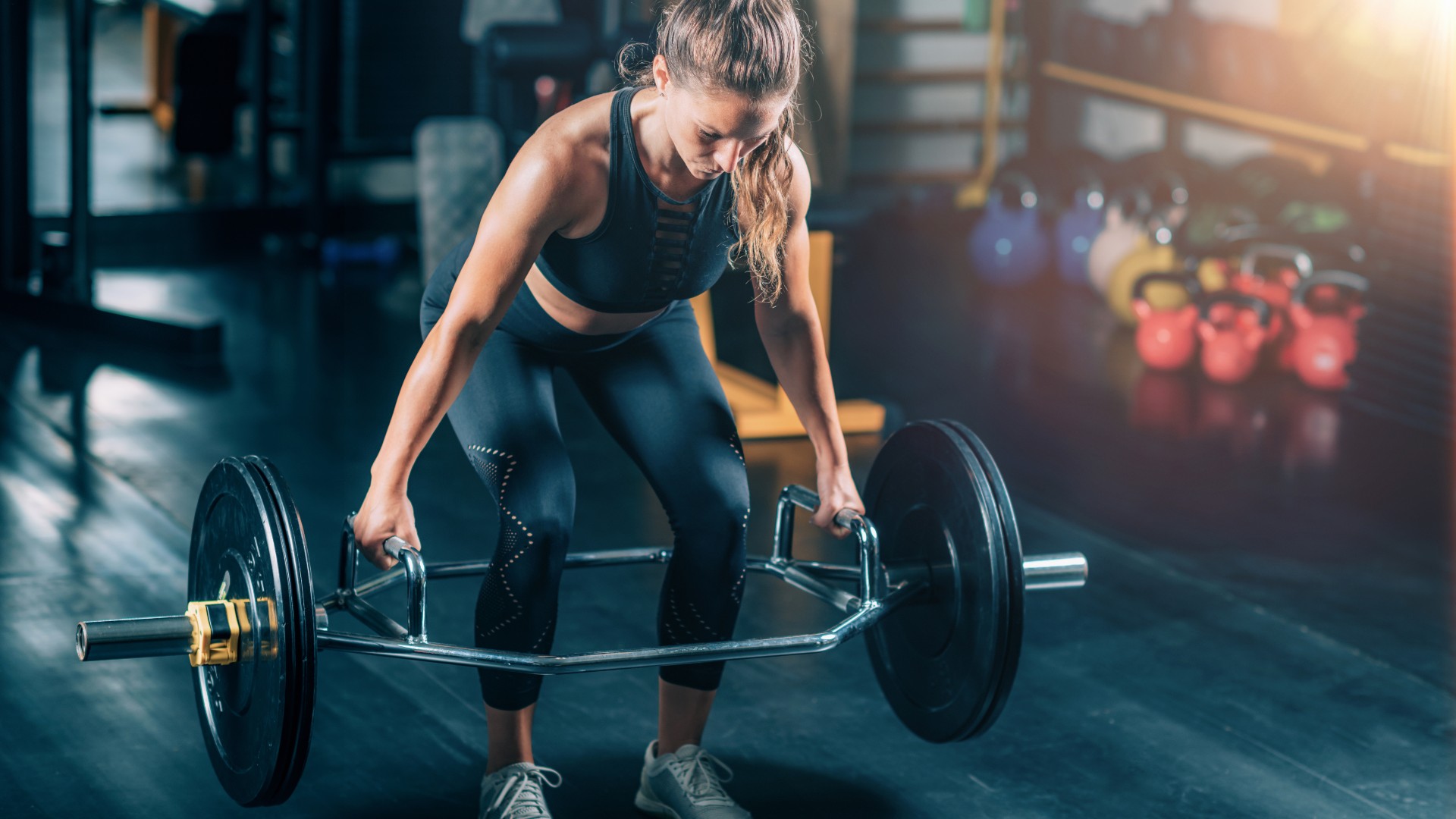
For many, deadlifts are the best compound exercise for strengthening your entire body. If you’re wondering how to use a trap bar to perform them, it’s a fairly accessible variation for most people to master.
The trap bar deadlift is a hip-hinge movement (hip flexion) that demands greater knee flexion than variations like Romanian deadlifts. The move targets the posterior chain muscles like the lower back, hamstrings, core and glutes, plus the lats and traps that help stabilize your back.
Lifters will step inside the trap bar, which centers the load in line with the lifter’s body; this helps shift heavier weights with less strain on the joints and lower back — many coaches will use the trap bar with beginners learning to deadlift for this reason. The bar is hexagonal, hence also taking the name “hex bar.” You’ll still load the plates to the sides, but you can grip one set of two handle options (high or low) using a neutral hand position.
Compared with the conventional deadlift, the trap bar deadlift is quad-dominant and requires less mobility to find a neutral spine position, sitting the lifter more upright and into the heels. The lower handle position forces a deeper set-up position, increasing demand on the quads and creating a more technical lift. One study, published in the Journal of Strength and Conditioning Research, even suggests the hex bar could be “more effective at developing maximal force, power and velocity.”
Verdict: Lifters may notice more quad and core activation using the trap bar than the conventional barbell. If you want to emphasize the quads and struggle with the hip hinge or back position during barbell deadlifts, this variation could be best. The hip-hinge movement also strengthens the glutes during hip extension, especially during heavy loading.
Hack squats vs trap bar deadlifts: When to avoid them
As with all exercises, there are potential downsides to consider. If you suffer from any pre-existing health conditions like injuries or illnesses, or you’re pre or post-natal, consider speaking with your physician or a qualified coach before starting a new exercise regime.
Machine hack squats might not be suitable for anyone with lower back pain like sciatica or joint pain in the hips, knees, or ankles due to the fixed range of motion, especially during heavy loads. Although the trap bar can be kinder to the lower back, anyone suffering from chronic pain should give these a miss and seek further advice.
Lifters who want to recruit more of the upper body and develop natural movement patterns are unlikely to reach for the hack squat as a priority. Barbell front squats or back squats and trap bar exercises demand more stability, upper body recruitment and a free range of motion.
That said, sometimes the position of a trap bar might limit the range of motion too much (especially if you're short), leading to partial reps. In this instance, opt for the lower handles, bend the knees slightly more and lift the chest.
If that doesn’t help, consider a barbell deadlift or elevate your feet on plates to add a deficit. Those training for powerlifting competitions and CrossFit may prefer using conventional barbells as trap bars won't feature.
Hack squats vs trap bar deadlift: Bottom line
There’s no reason you can’t use both exercises during lower-body workouts, especially if your goal is to build or strengthen your quads. One doesn’t replace the other — each lift comes with its own pros and cons worth learning, and it comes down to what you enjoy doing, your mechanics and your experience with weightlifting.
One consideration is whether you want to build strength, muscle, endurance, or power, which will determine the loads, sets, reps, rest and frequency you’ll choose. You can learn more about programming for each using our hypertrophy vs strength training guide.
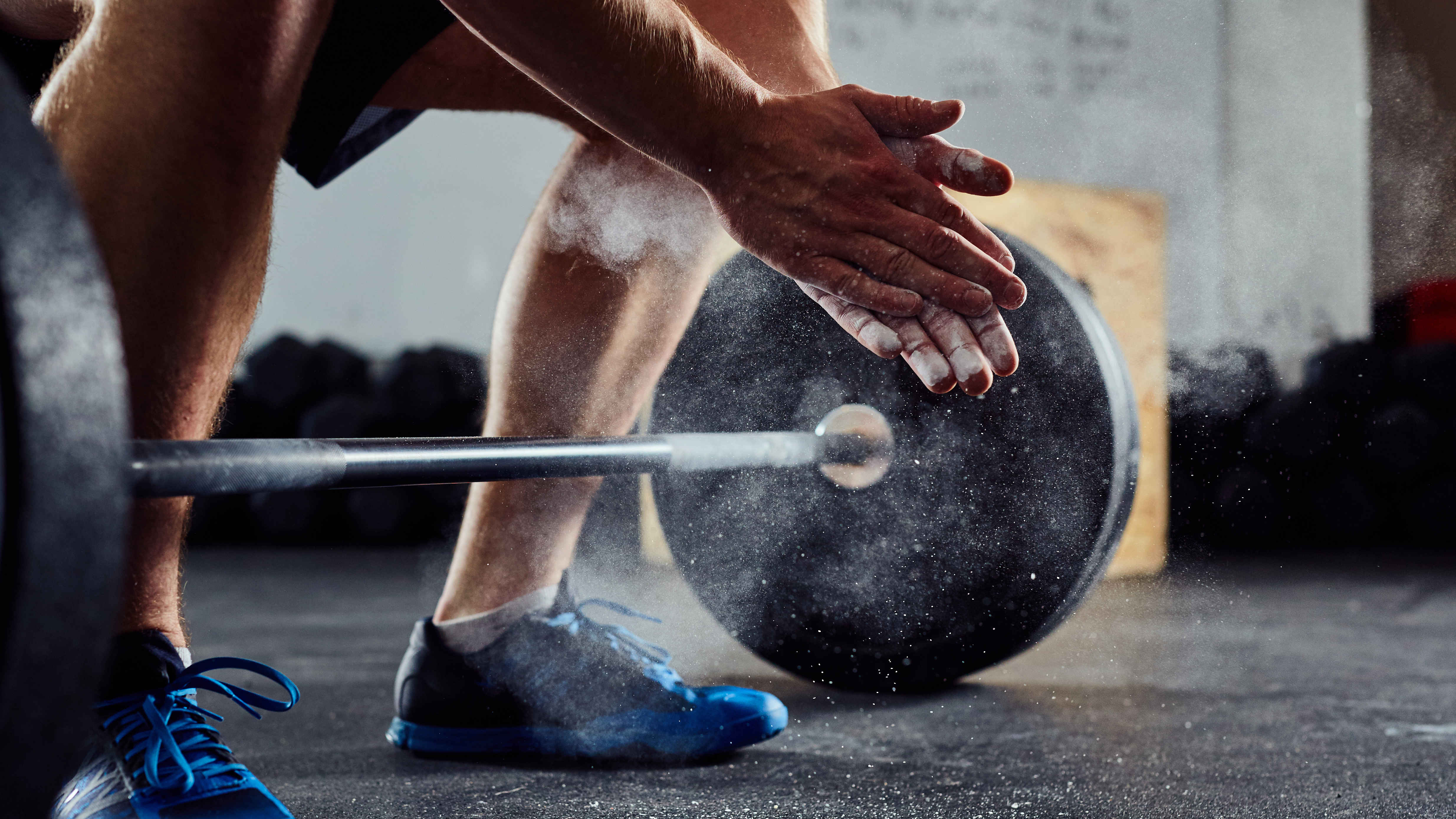
Our verdict:
Trap bar deadlifts and hack squats are effective lower-body compound exercises for building the quads and are (in some instances) considered “easier” variations than counterparts like the conventional deadlift or barbell squat, respectively. These more “supportive” variations may demand less range and help improve positioning, producing less pressure on the back or shoulders.
If you prefer to build strength in your posterior chain muscles, we recommend the trap bar deadlift over the hack squat, and if you solely want to drill into those quads, consider the hack squat instead. Program other primary lifts to your routine using free weights, and include squats, lunges, and deadlifts to build a well-rounded lower body program.
Working with free weights over machines is the best tip I've learned for growing muscle and building strength, as free weights encourage greater overall muscular engagement and help strengthen the stabilizer muscles that support your trunk. Typically, machines get used by coaches as accessories to primary lifts and during isolation exercises.
More from Tom's Guide
- Forget sit-ups — you only need 1 kettlebell and 3 seated ab exercises to sculpt your core
- Core 5 barbell exercises for beginners
- 7 of the best barbell exercises for building a strong core

Sam Hopes is a level 3 qualified trainer, a level 2 Reiki practitioner and fitness editor at Tom's Guide. She is also currently undertaking her Yoga For Athletes training course.
Sam has written for various fitness brands and websites over the years and has experience across brands at Future, such as Live Science, Fit&Well, Coach, and T3.
Having coached at fitness studios like F45 and Virgin Active and personal trained, Sam now primarily teaches outdoor bootcamps, bodyweight, calisthenics and kettlebells.
She also coaches mobility and flexibility classes several times a week and believes that true strength comes from a holistic approach to training your body.
Sam has completed two mixed doubles Hyrox competitions in London and the Netherlands and finished her first doubles attempt in 1:11.


